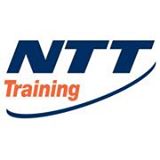|

National Technology Transfer, Inc.
presents
2021 ARC FLASH ELECTRICAL SAFETY [BASED ON NFPA 70E®] On-Site Training
This course provides a “hands-on” experience where attendees perform the same safety skills they must demonstrate in the field.
Course Description/Agenda
HANDS-ON
2 DAYS
CEU ELIGIBLE
NEW for 2021 – Electrical Safety has been completely updated not just for the changes to the standard this cycle, we have taken student interactions to the next level – introducing both student laptops for simulations and new instructor demonstration equipment to combine the discussion of content and application of material in an in-class interactive format. It provides a “hands-on” experience where attendees perform the same safety skills they must demonstrate in the field. This is what NTT Electrical Safety Training is all about.
This interactive course provides a learning experience taught by industry veterans where attendees are individually verified to
have understood the safety skills they will use in the field.
The NFPA 70E® Standard for Electrical Safety in the Workplace provides the prescriptive methods for OSHA compliance for
electrical safe work. NTT Training provides the interpretation of the standard through hands-on instructor demonstration
and student practice for implementing the standard. Workplace exercises using real-world scenarios alongside annotated
explanations of the NFPA 70E ensures they understand these requirements.
Continuing Education Units (CEUs) and Contact Hours
Upon completion of this training program, the attendee will receive a certificate of completion. Please contact your state or local licensing agency to determine if this training program is accepted for Continuing Education recognition by the agency.
COURSE OBJECTIVES
- Understand the Risk Assessment approach to Electrical Safety
- Apply OSHA rule 1910.331-335 training requirements and NFPA 70E® standards
- Understand the effect of maintenance on equipment and how it reduces injury
- Describe proper use of test instruments making contact with energized parts
WHAT YOU WILL LEARN
- Learning to identify the hazards of an electrical job
- Assessing what can be done to eliminate hazards
- Understanding methods of mitigating hazards
- How to use best industry practices to comply with requirements
- Achieve a safe-as-practical approach to performing electrical work
WORKSHOP AGENDA
ELECTRICAL SAFETY AND YOUR ELECTRICAL SAFETY PROGRAM
• Trainees start off receiving a brief overview of electrical safety history.
• Using the NTT’s illustrated and annotated explanation of the NFPA 70E Standard, trainees will identify electrical safety program requirements.
• Trainees will compare those requirements to their own company’s electrical safe work program.
UNDERSTANDING ELECTRICAL HAZARDS
• Trainees participate in group exercises around risk awareness.
• Information regarding the risks of shock, arc flash, and arc blast are presented.
• Trainees review shock potentials and incident energy levels in a facility distribution system.
• They will learn to mitigate shock and arc flash hazards based on NFPA codes and technical hands-on interactions.
ELECTRICAL SAFE WORK PRACTICES AND PROCEDURES
• Safe work practices identified in NFPA 70E are laid out in steps.
• Trainees will learn these steps as they use the NTT Job Aid to develop a Job Safety Analysis (JSA).
• This JSA will be used throughout the remainder of the class for hands-on activities.
ELECTRICAL PERSONAL PROTECTIVE EQUIPMENT
• Trainees will discuss characteristics and maintenance of various types of PPE.
• The instructor will demonstrate proper donning and doffing techniques.
• Trainees will use the checklist in their text to inspect NTT or student supplied PPE.
NORMAL OPERATION OF EQUIPMENT
• Discussion of NFPA 70E’s five requirements of electrical equipment to achieve Normal Operation status.
• Trainees will perform a visual inspection of the NTT electrical equipment for installation and
maintenance issues.
• Examples of good and bad installations are discussed, including proper body positioning and techniques for typical switching operations.
• Trainees will use the table in the NFPA 70E
• Standard to determine the need for PPE.
ESTABLISHING THE ELECTRICALLY SAFE WORK CONDITION
• OSHA and 70E requirements are presented and discussed.
• Trainees perform a Lockout/Tagout procedure on electrical equipment.
• The 3-point method is used to verify that a circuit is electrically safe.
CONDUCTING AN EMERGENCY RESPONSE DRILL
• Following NFPA 70E requirements, trainees will develop an emergency response plan.
• Trainees then implement the plan following the scenario given by the instructor to simulate an electrical accident.
• Conclusion that will summarize the electrical safe work practices learned.
|
 Add to favorites
Add to favorites Email this page
Email this page

 On-Site Training
On-Site Training Seminar
Seminar